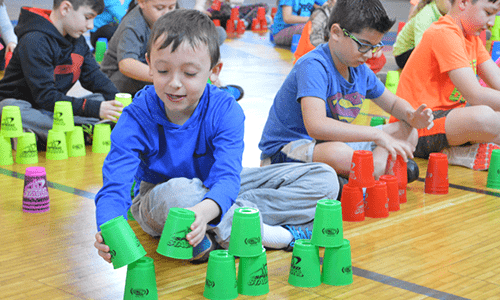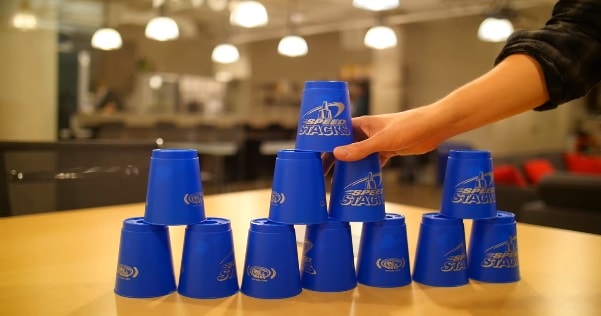HOW IT STARTED
Sport stacking originated in the early 1980’s in southern California and received national attention in 1990 on a segment of the “Tonight Show”, with Johnny Carson. That was where it first captured the imagination of Bob Fox, who was then an elementary classroom teacher in Colorado.
Speed Stacks founder Bob Fox says, “When I first became passionate about sport stacking in 1995, a lot of people would hear about it and scratch their heads. Stacking a sport? The only way to explain it was to show them firsthand – sport stacking is truly something you have to see to believe! I absolutely love the challenge of turning skeptics into believers, and the list of stacking enthusiasts grows every day.”
Speed Stacks spreads nationally. In 1998, Bob was asked to present sport stacking to Texas. After a tremendous response Speed Stacks, Inc. was born as a small home business designed to promote sport stacking and be a resource to physical education teachers. And the sport continued to grow. Bob started traveling across the country to present stacking to fellow PE teachers, and in 2000, after 17 years of teaching, he decided to leave his school district to devote full time to Speed Stacks. The sport’s popularity continues to grow exponentially. More than 49,844 schools worldwide have a Speed Stacks program as part of their PE curriculum.
What are the benefits of sport stacking? Kids don’t need to be convinced about the benefits of sport stacking. They just plain love it (even your “way too cool for it” kids).

For teachers and parents, we’ve always touted hand-eye coordination, quickness and ambidexterity. We now can substantiate those claims. A university study by Dr. Brian Udermann, currently at the University of Wisconsin-Lacrosse, confirms that stacking improves hand-eye coordination and reaction time by up to 30 percent.
Sport stacking helps students develop bilateral proficiency equal performance on both sides of the body. By increasing bilateral proficiency, a student develops a greater percentage of the right side of the brain, which houses awareness, focus, creativity and rhythm. Stacking helps train the brain for sports and other activities where the use of both hands is important, such as playing a musical instrument or using the computer. Sequencing and patterning are also elements of sport stacking, which can help with reading and math skills.
Retrieved from https://www.speedstacks.com/instructors/resources/history/
(World Sport Stacking Association (WSSA))
Views: 0



